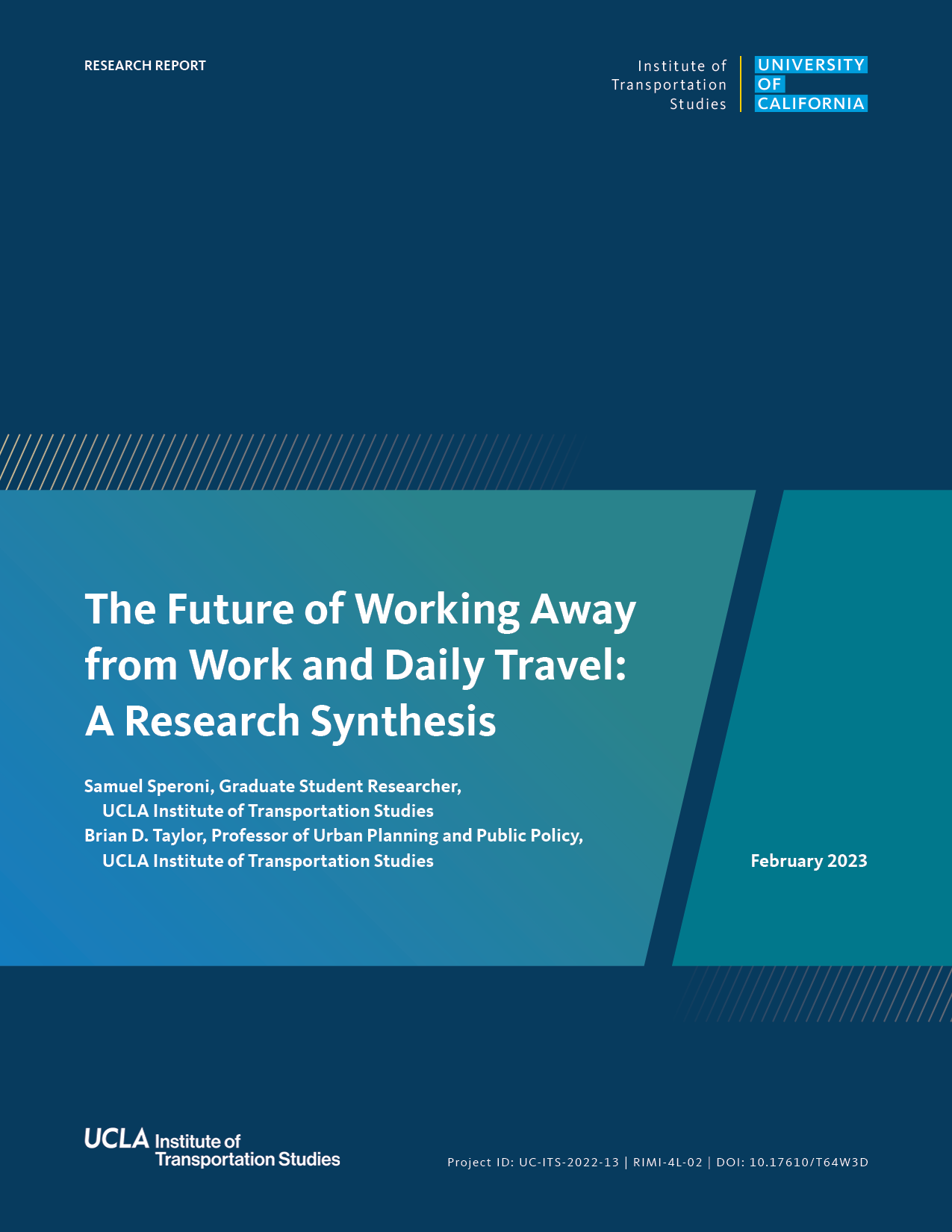Date: March 3, 2023
Author(s): Samuel Speroni, Brian D. Taylor
Abstract
This research synthesizes literature on the relationship between working from home and travel. This relationship is a pertinent one because transportation planners and policymakers have long hoped that increased remote work, sometimes called telecommuting or telework, will reduce driving, traffic congestion, and vehicle emissions. This question is especially pertinent today because working from home increased dramatically early in the COVID-19 pandemic and has remained at substantially elevated levels since then. To examine this issue, we review nearly 100 research articles, reports, and some popular accounts of telecommuting and travel prior to and during the pandemic. In conducting this review, we arrive at five principal findings. First, remote work increased dramatically with the onset of the pandemic and appears likely to remain elevated for many years to come. Second, while not everyone can work remotely, for those who have the option to do so, at least part-time, this hybrid option is extremely popular with most workers. Third, employers tend to be skeptical of the benefits of remote work, but the research does not support fears of declining productivity in the near term, and the tight post-pandemic labor market has given workers leverage to insist on remote work options. Fourth, telecommuting has long been touted as a potential solution to chronic transportation problems like traffic congestion and vehicle emissions, but the research has consistently found that it is more likely to increase, rather than decrease, overall driving among remote workers. This extra driving is due both to hybrid workers living farther from work, on average, than non-remote workers and to all remote workers making more household-serving and personal trips when they work from home. And fifth, public transit systems, in contrast to street and highway systems, have been dramatically affected by the pandemic, likely due substantially to the rise in remote work it has engendered. The future of many public transit systems, which draw an outsized share of their riders from commuters to downtowns and other major job centers, will depend on whether and to what extent those job centers re-densify with workers in the months and years ahead.
About the Project
Prior to the COVID-19 pandemic, about five percent of the U.S. labor force worked primarily from home. Between February and April of 2020, the share of the labor force working from home skyrocketed to well over 50 percent in response to public health orders to contain the pandemic. While no one expects the share of those working from home to stay at such high levels as the pandemic recedes, there is considerable debate among experts on just how many workers will return full-time to employment sites. This research will review the well-established and substantial pre-pandemic literature on working from home and travel as well as the nascent but rapidly growing literature on working from home and travel in the COVID-19 pandemic to offer insights on the future of home/work location choices, commuting, and transportation mode usage, likely through the presentation of plausible future location/travel scenarios and their policy implications.


